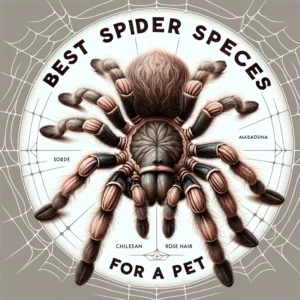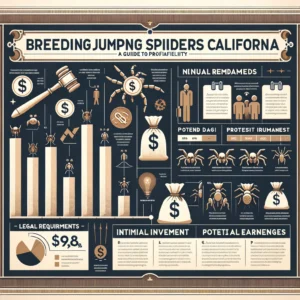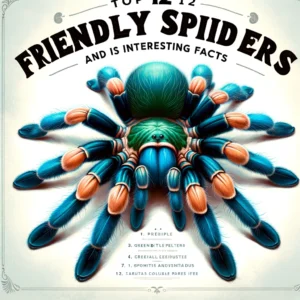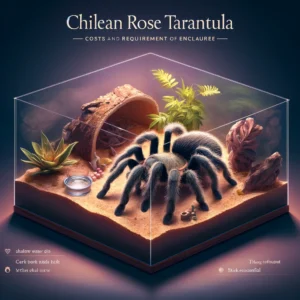Jumping spiders, known scientifically as the family Salticidae, are a diverse group that comprises over 6,000 species, some of which are native to California. These spiders are often recognized for their excellent vision, distinctive movements, and striking appearance, which can include vivid colors and intricate patterns. Despite their somewhat fearsome look and ability to leap impressive distances relative to their size, many people wonder about the potential danger they pose: Are California jumping spiders poisonous?
Understanding the Harmlessness of California Jumping Spiders
Jumping spiders, a part of the Salticidae family, are often noticed for their vivid colors and unique ability to leap distances. Despite their fierce appearance, the common question arises: Are California jumping spiders poisonous? This article clarifies their impact on humans and discusses their ecological benefits.
Venom vs. Poison: What’s the Difference?
- Poisonous: Harm can occur if you touch or ingest.
- Venomous: Harm is inflicted via injection, such as a bite or sting.
- Application to Spiders: Jumping spiders are venomous, not poisonous, meaning they deliver venom through a bite.
Are Jumping Spiders Harmful to Humans?
- Venom Potency: The venom is primarily designed for small insects, not humans. It is not potent enough to cause serious harm.
- Reaction to Bites: If bitten, most humans experience only minor symptoms like slight irritation or swelling.
- Frequency of Bites: Bites from jumping spiders are rare. These spiders prefer to escape rather than confront humans.

Behavioral Traits of Jumping Spiders
- Avoidance of Humans: They are non-aggressive and shy away from human contact.
- Defensive Bites: On the rare occasions they do bite, it is usually in self-defense when they feel threatened or trapped.
Ecological Benefits of Jumping Spiders
- Natural Pest Control: They help control pests by eating common household insects, including:
- Flies
- Mosquitoes
- Moths
- Biodiversity Indicators: Their presence in a garden can signify a healthy ecosystem.
The Cultural Fascination with Jumping Spiders
- Observational Joy: Jumping spiders are known for their “dances” and complex courtship rituals, making them interesting to observe.
- Contribution to Science: Their unique behaviors and advanced visual capabilities are subjects of ongoing scientific research.
Certainly! Here’s a set of frequently asked questions (FAQs) about California jumping spiders:
FAQs About California Jumping Spiders
1. What are jumping spiders?
- Jumping spiders belong to the Salticidae family, which includes over 6,000 species. They are known for their excellent vision and ability to leap several times their body length.
2. Are jumping spiders dangerous to humans?
- No, jumping spiders are not dangerous to humans. Their venom is designed for small prey like insects and is not potent enough to cause serious harm to humans.
3. Do jumping spiders bite, and what happens if they do?
- While jumping spiders can bite, it is rare and usually only happens if they feel threatened. Most bites result in minor symptoms like slight irritation or swelling.
4. How can I identify a jumping spider?
- Jumping spiders are small to medium in size, with compact bodies and short legs. They often have distinctive, large forward-facing eyes and can be found in various colors and patterns.
5. Where do jumping spiders live?
- Jumping spiders are versatile and can be found in many environments, including grasslands, forests, mountains, gardens, and homes. They prefer sunny places where they can hunt.
6. What do jumping spiders eat?
- They primarily feed on insects such as flies, mosquitoes, and moths. They are adept hunters, using their jumping ability to ambush prey.
7. How do jumping spiders hunt?
- They do not spin webs to catch prey. Instead, they use their excellent vision to spot prey, stalk it quietly, and then leap to capture it.
8. Are jumping spiders solitary?
- Yes, jumping spiders are mostly solitary except during mating or when raising their young. They are territorial and typically interact with others only during courtship.
9. How do jumping spiders reproduce?
- Males perform elaborate dances and visual displays to attract females. After mating, females lay eggs and often guard them until they hatch.
10. Can I keep a jumping spider as a pet?
– Yes, jumping spiders can make interesting pets due to their unique behaviors and low maintenance needs. They require a small enclosure and a diet of small insects.
Conclusion: Embracing Jumping Spiders
Jumping spiders, particularly those found in California, pose no significant threat to humans. Their venom lacks the potency to be harmful to us, and their bites are rare and generally harmless. Instead of fear, these spiders should be regarded with interest and appreciation for their role in controlling pests and adding to ecological diversity. Observing these fascinating creatures can provide valuable insights into the natural world and enrich our understanding of the complex web of life.

Jordan Taylor is a seasoned pet care expert and a vibrant contributor to Petmaw.com. With over a decade of experience in veterinary science, Jordan brings a wealth of knowledge and a deep passion for animals to every article. After earning a degree in Veterinary Medicine from the University of Alaska Anchorage, Jordan spent several years working in a busy veterinary clinic, where they honed their skills in pet nutrition, behavior, and wellness.
Jordan’s love for animals isn’t just professional; it’s a fundamental part of their life. Home is shared with three rescue Sloth, two cats, and a small flock of backyard chickens, each with their own rescue story and special place in Jordan’s heart. This personal connection to animals shines through in Jordan’s writing, making their advice not only expert but also empathetic and practical for pet owners.
At Petmaw.com, Jordan is dedicated to providing pet owners with the latest research, trends, and tips in pet care, from innovative feeding strategies to understanding the subtle signs of pet health issues. Whether you’re a seasoned pet owner or new to the pet parenting world, Jordan’s insights aim to enhance the well-being of pets and deepen the human-animal bond.
In their spare time, Jordan is an avid hiker, often found exploring the trails with their dogs. They also volunteer at local animal shelters, offering their expertise and helping animals in need find forever homes. Jordan’s commitment to animal welfare and passion for sharing knowledge makes them a cherished member of the Petmaw.com family and a trusted guide for our readers.





